Tsum Valley Trek
Overview
Tsum Valley Trek is a sacred Himalayan pilgrimage valley trek that is situated in northern Gorkha. It is rich in ancient art, culture, and religion. The local people are of Tibetan origin and speak their own dialect. Being one of the remotest Himalayan valleys, the untouched beauty makes the trek much more enjoyable and pleasant. The valley gives us an amazing view of the landscapes and the mountains like Ganesh Himal, Shringi Himal, and Boudha Himal.Explore the secret Tibetan Buddhist land, which lies in the heart of the most isolated and hidden Himalayan Valley. With the history of Buddhism, also discover the beauty of nature in the off-beaten route which provides spectacular views of the majestic mountains.
Highlights
- Scenic drive from Kathmandu to Arughat
- Exploration of the Tibetan culture and lifestyle
- Waterfalls, rivers and caves along the way
- Comparatively easy trek with no fear of altitude sickness
- Wildlife animals like blue sheep and Himalayan thar
- Many Buddhist monasteries
- Prayer flags and Mani walls along the route
- Stunning views of mountains like Ganesh Himal and Himal Chuli
- Beautiful pine, juniper and rhododendron forests.
Benefits
- Private transport to and from our hotel in Kathmandu to Kathmandu’s international airport, Tribhuvan International Airport (TIA).
- Provide pulse oximeter for blood oxygen saturation level monitor to high altitude. It is an important indicator to recognize early signs of impending altitude sickness and other potentially health risks.
- Medical Kit.
- Arrangement of sleeping bags and down jackets if you do not have your ow
The Tsum valley is still not as much exposure as other trekking destinations as it was restricted until the year 2008. As the valley is rich in Buddhist culture, it comprises of many religious monasteries such as Rachen Gompa and Mu Gompa. Not just the culture, but the biodiversity is splendid as well with many forests, rivers, caves, etc.
The journey heads off with a scenic drive to Arughat following to Soti Khola. We will climb the Budhi Gandaki valley upstream via the mix of green terrains and many villages. As we trek, we will pass through blooming rhododendron and pine forests. Continuing the trek, we will be heading from Jagat to Lokpa where the trail will further lead us to Tsum valley; home to Tibetan locals. The route will have many prayer flags and mani walls that indicate the Buddhist culture. Along with it, we will pass by glacial rivers, beautiful waterfalls, and the beauty of nature within the valley. On the way, we will also be visiting the Piren Phu cave which is one of the most sacred caves in the valley.
While on the way we may see the local wildlife such as the blue sheep or the Himalayan Thar. We will visit the monasteries on our way like the Mu Gompa then the Rachen Gompa. After crossing several suspension bridges we will reach Gumba Lungdang where after an overnight we will trek to the Ganesh Himal base camp. This exciting trek to the camp is indeed a rewarding one. Then we head back trekking to Lokpa then further down to Jagat. On the following day, we cross many bridges and villages reaching the Arughat Bazaar and from there we drive back to Kathmandu.
Conclusion and Summary
The Tsum Valley Trek is indeed an adventurous one that takes you via the off beaten route where you will explore the Tibetan culture, witness nature’s beauty, and also give a pleasant trek. Trekkers may also wish to opt for other trekking packages we offer like Manaslu Circuit Trek 12 days Around Manaslu circuit trek Tsum Valley and Manaslu circuit trek.
Itinerary
-
Day 1: Drive from Kathmandu to Arughat then to Soti Khola (730m/2,896ft)
After early morning breakfast, we will begin our journey with a scenic drive to Arughat, following to Soti Khola. Driving on the Prithivi Highway; west from Kathmandu, we will be passing by a beautiful river view of the Trishuli river. In the first few hours, we will reach Dhading Bensi which is the district headquarters of Dhadhing (1050m). In this long drive, we will be stopping for multiple breaks and for lunch as well. From Dhading Bensi, we will be driving to Arughat where the roads will be rough. Along the way, we will see beautiful mountain scenery like Mt. Manaslu and Ganesh Himal range, small villages following the Budhi Gandaki river. Arughat being a large settlement, it is clustered on both sides of Budhi Gandaki river connected by a suspension bridge. The next two hours’ drive will take us to Soti Khola.
-
Day 2: Trek from Soti Khola (730m/2,896ft) to Machha Khola (890m/2,965ft)
We begin our trek to Machha Khola. We will be crossing the Soti Khola with an attractive view of waterfalls and the river. Then we will be walking through the beautiful Sal forest, following the climb onto a ridge above the huge rapids of the Budhi Gandaki river on the way to Liding (750m). Passing through the rocky trails, we reach Khursane. Across Budhi Gandaki are the views of Annapurna Circuit between Bahundanda and Syange that looks incredible. Soon after, we will be trekking down rice terraces taking us to Lapubesi; a Gurung village. The path takes us where the valley opens up and the Budhi Gandaki wanders among wide gravel bars. The trail follows down to the sandy river bed of the Budhi Gandaki and we trek down to Nauli Khola crossing a suspension bridge and eventually arriving at Machha Khola.
-
Day 3: Trek from Machha Khola (890m/2,965ft) to Jagat (1,400m/4,593ft)
After an early morning breakfast, we will trek through a fertile landscape as there will be a few ups and downs. Crossing the Tharo Khola, we will reach Khorlabesi. We slowly begin to gain elevation. As we trek, we pass through a natural hot spring at Tatopani meaning ‘hot water’ in Nepali. Continuing the trek, we walk through the valley as it gets narrower but nature’s beauty does not cease to fail us in the attractiveness. We climb over a ridge, then we cross the Budhi Gandaki river via a suspension bridge. Witnessing picturesque villages, we climb on a wide well designed staircase across a landslide then over a ridge that takes us to Doban. As we ascend up to the Budhi Ganadaki river, we arrive at Yaru Khola that takes us further to a stone staircase with prayer flags hung on the way. We climb more stairs to Tharo Bharyang. Along the route, we pass through paved stones along with mani walls and high overlooks over rivers. Then we reach the appealing village of Jagat that lies on the west side of Budhi Gandaki River.
-
Day 4: Trek from Jagat (1,400m/4,593ft) to Lokpa (2,040m/6,692ft)
Before heading to Lokpa, we will register our permits for Manaslu and Tsum valley at the entry checkpoint. Climbing a ridge over Gallery, we will walk along the river bank crossing the Budhi Gandaki river via a long wide suspension bridge. Continuing to trek, the valley opens up as we head towards Phillip. The trek throughout is a very pleasant one. We will pass by Ekle Bhatti where the trail separates between Tsum and Manaslu. As we trek, we will notice the welcome board, so we head towards Lokpa. On the way, we will see a few villages and rivers. The rivers begin to narrow down as we meet the convergence of the Syar river from the Tsum valley. Taking a right turn, the trail takes us forward, eventually reaching the Lokpa village. This village is the first village in the Tsum valley that gives us the opportunity to view the beautiful Manaslu range. This village is isolated and is a hidden valley of happiness blessed by Padmashamva centuries ago.
-
Day 5: Trek from Lokpa (2,040m/6,692ft) to Chumling (2,386m/7,828ft)
The day begins with a trek from Lokpa village which is an entrance to a wild route to Tsum Valley. Although the actual entrance begins from a deep slender and narrow gorge. Depending on the weather, if favorable, on the way we will be blessed by the amazing view of the Boudha Himal (6,672m) and Ganesh Himal. The route takes us descending down to the Lungwa river valley as we climb through the dense tropical forests of rhododendron, juniper, and pine. The route takes us to Gumling where we only capture the serene nature. Shortly, we cross the Syar Khola again, arriving at the village of Chumling. As the day slowly comes to an end, we will have spare time to visit the monasteries of Chumling; The Panago Gompa, Mani Dhungyur, and Gurwa Gompa. This village includes telephone service as well as health posts
-
Day 6: Trek from Chumling (2,386m/7,828ft) to Chhokang Paro (3,031m/9,944ft)
The destination for today is Chhokang Paro and we begin our trek early in the morning. The upper Tsum valley opens from Chhokang Paro. It is a village that is situated on flat land and is made up of two settlements which are Chhokang and Paro. As we cross the suspension bridge onto the opposite bank, we will see great views of Ganesh Himal and from the south, we can see spectacular views of Boudha Himal and Himalchuli peaks to the southwest. We continue trekking past Rainjam to Serpu Khola crossing another bridge, arriving at the Gho Village. After another two hours climb, we finally make it to the village of Chhokanparo. In this village, we will be welcomed by hospitable locals welcoming us with Tibetan tea (butter tea) and local meals. If favorable weather, we will enjoy the views of Himalchuli and Ganesh Himal.
-
Day 7: Trek from Chhokang Paro (3,031m/9,944ft) to Nile (3,361m/11,026ft)
The Nile village is on the western side and is the last village heading north in the upper Tsum Valley. It is on the sun side of the Shiar Khola and about twenty minutes’ walk from across Chhule. As we trek, we will pass the Piren Phu cave which is also known as the pigeon cave. This cave is one of the most sacred caves in the Tsum Valley. It is located at the foot of a rugged cliff near the village of Burji. The famous Tibetan saint called Milarepa was believed to have meditated in that cave as his footprint is imprinted on the cave. The route further is a very pleasant trek, as we will be walking past green meadows and the landscape become fertile and narrow. The farmers will be busy farming. There are two separate monasteries that are attached to the rocky cave. It is abundantly painted with Buddhist murals, excellent artistic scripts carved on the stones and long prayer flags and Buddhist paper scripts are in it that makes it one of the most important socio-cultural asset in the valley. Crossing the suspension bridge over the Shiar Khola, we will soon arrive at the Nile.
-
Day 8: Trek from Nile (3,361m/11,026ft) to Mu Gompa (3,700m/12,139ft), visit Dhephyudonma Gompa (4,060m/13,320ft)
Followed by an early morning breakfast, we will head out of Nile as the trail gradually ascends to Mu Gompa. It is the largest monastery in the region. Mu Gompa is located at the highest and the farthest point in the Tsum Valley. It was established in 1895 AD and includes many religious books including Kangyur, a life-size statue of Avalokiteshwara, and images of Guru Padmasambhava and Tara. The route takes us through yak pastures through typical dry and arid Trans Himalayan Terrain. The monastery has rows of Chortens and beautiful mountain views and houses. The historical Dephyudonma monastery connected with the dawn of Buddhism run by Lama, on the lap of the rugged mountains, is one of the oldest monasteries in the Tsum valley.
-
Day 9: Trek from Mu Gompa (3,700m/12,139ft) to Rachen Gompa (3,240m/10,629ft)
Shortly after breakfast, we will head from Mu Gompa to Rechen Gompa; a nunnery following the trails. It is situated in the Shiar Khola Valley in the foothills of the mountains that border Nepal and Tibet. We return down the valley through Chhule and continue down as far as Phurba. Walking on the east bank of the Siyar Khola and crossing flat boulder-covered plains following the power lines to Rachen Gompa. Rachen Gompa has established in the year 1905 AD and is one of the largest nunneries in the Tsum valley. The interior of the Gompa is richly painted with murals about Buddhism and its history.
-
Day 10: Trek from Rachen Gompa (3,240m/10,629ft) to Gumba Lungdang (3,200m/10,498ft)
After trekking south, we cross a bridge to the west bank passing through the Chhokangparo again. We descend down the old trail towards Chumling and approximately two hours later we will witness a small white gompa on the left at Gho (2,458m). We descend down a narrow trail that passes through a Gompa then onto a wooden bridge over the Siyar Khola. Soon, we will be crossing the bridge to Domje which has a Tibetan herbal medicine clinic and a school. Further with a steep climb through pine, juniper, and rhododendron forest, the track starts to traverse at a mani wall with many prayer flags hung. This sight of the Tibetan culture is absolutely beautiful. Finally, in the forest, there is a prayer flag that marks the uphill trail and makes a zigzag climb through a big silver pine to reach the Gompa in Lungdang. Rhododendrons will be seen blooming everywhere. If this trek is done during the spring season, the view will definitely be breathtaking seeing nature capture our eyes and mind. This small gompa has forty nuns and an intense puja from 6:00-7:30 pm every night unless the nuns are on holidays which could be for some months in a year. From the gompa, beautiful and astonishing views of the mountains can be seen.
-
Day 11: Trek from Gumba Lungdang (3,200m/10,498ft) to Ganesh Himal Base Camp (4,200m)
Today is an exciting day as we will be trekking to the Ganesh Himal Base camp. On the route, the forest wilderness and the views make it an enjoyable and adventurous trek even though the altitude rise may cause difficulty in breathing and hiking. The route crosses through two small valleys dropping on the muddy meanders on a shortcut to regain the lower track and continue up the valley via a thick and dense forest. We will cross a small pasture, taking a right turn, we decsned the track and down to the river. The suspension bridge takes us to a bank. The trail becomes slightly challenging but we will manage to cross the forest with many winds that have thrown trees crossing the Laudang Khola on the west bank on top of an unbalanced wooden bridge. Yet again, we climb through steep rhododendron and pine forests eventually reaching on to a ridge and stone huts beside a large stone in Kharka. Shortly, we will reach a landscape with greenery. Flat grassy lands and the lateral moraine of the Torogumba Glacier. As we continue climbing up, in a couple of hours we reach the Ganesh Himal Base Camp. After appreciating and admiring the effort to reach up here, we will then return back to Gumba Lugdang as it is a short trek.
-
Day 12: Trek Gumba Lungdang (3,200m/10,498ft) to Lokpa (2,040m/6,692ft)
Today we will be returning back to Lokpa. We will descend down to Domje by trekking in the upper track crossing the Laudang Khola. Crossing an unstable swing bridge between the lowest two houses in Domje, we will stay on the south bank of the Siyar Khola. As we walk by, we will come to across a new trail via a beautiful dense forest that will take us yet to another deep gorge and swinging bridges to Ripche (2,470m). We walk down the stairs to the Bhatti Ghumlong which we had walked through several days ago. As we climb up again through a pine forest, we will reach Lokpa.
-
Day 13: Trek from Lokpa (2,040m/6,692ft) to Jagat (1,400m/4,593ft)
As we descend down to Jagat, we will be rejoining the Budhi Gandaki river. As we trek, we will get a few glimpses of the mountains. Walking through forests and terrains gives us an easy pleasant trek. Taking breaks in between, we will reach Sirdibas. After crossing a few suspension bridges, we will finally reach Jagat.
-
Day 14: Trek from Jagat (1,400m/4,593ft) to Lapu Bensi (900m/2,952ft)
After early morning breakfast, we will be descending to Lapu Bensi. The trek today will be at ease and pleasant as we will walk through terrains and cross severely bridges. Trekking down to Machha Khola we will yet again cross a suspension bridge over the Nauli Khola. As we trek on the sandy river bed of the Budhi Gandaki, we will finally reach the Lapu Bensi; a small beautiful Gurung village.
-
Day 15: Trek from Lapu Bensi (900m/2,952ft) to Arughat Bazaar (535m/1,755ft) .
Today we will have a short trek back to Arughat Bazaar. Firstly we will be trekking a couple of hours following the Budhi Gandaki river that will take us to Soti Khola. From Soti Khola we will be taking a jeep to Arughat Bazaar. After a couple of hours of drive, we will reach the Arughat Bazaar. In this town, there are small cafes and shops where we can explore. Trekkers may wish to rest at the lodge or explore this town.
-
Day 16: Drive back to Kathmandu from Arughat
Followed by an early morning breakfast, we will be driving back to Kathmandu. The drive will be scenic as we will be passing by the beautiful Trishuli river. Also, the greenery of the hills will be eye-pleasing. We will be driving west towards Kathmandu via the Prithivi Highway. Shortly, we will reach Kathmandu, where you will be escorted to your respective hotels. Afterward, with spare time in hands, trekkers may wish to rest at their hotel or explore the Kathmandu city.
Include / Exclude
Cost Includes:
-
- Both way transportation service between Kathmandu and Arughat by local bus or Private Transport.
- Accommodations: Best Possible Teahouse, lodge accommodation (Generally twin Sharing room)-15 Nights
- All Standard Meals (16 Lunches, 15 Dinners and 16 Breakfasts) during the trek.
- Government License holder English Speaking Everest Expeditions Nepal experienced and qualified trek leader,(12 or above trekkers: 1 assistant guide) and porter to help trekkers luggage. (2 trekkers:1 porter “9 kg per trekker max limit”)
- Coverage of Guides and Porters, Their meals, insurance, salary, lodging, transportation, and other necessary equipment.
- Tsum Valley special permit with Conservation Area Permit fees.
- Water purification tablets for safe drinking water
- Snacks (cookies) and Seasonal fresh fruits every day
- All government, Local taxes and official Expenses
- Assistance in arranging rescue operation in case of complicated health condition (funded by travel insurance)
- Souvenir – A company’s T-shirt & Cap
- Everest Expeditions Nepal’s appreciation of certificate after the successful trek
- Farewell Dinner at the end of the trek
Cost Excludes:
- International flight airfare
- Excess baggage charges (Limit is 9 kg per Person)
- Nepal Entry Visa Fees for multiple Entries on arrival at Tribhuvan International Airport- (15 days – $25-30, 30 days- $40-50 and 90 days- $100-110)
- All Accommodation and meals in Kathmandu, before and after we start our journey
- Extra night accommodation in Kathmandu due to early arrival or late departure, early return from the trek.
- Personal expense (shopping, snacks, boil bottle water, hot and cold drinks, hot shower, Alcohol, Wi-Fi, telephone call, battery re-charge fee), extra porters etc
- Personal clothing and gear
- Travel insurance which has to cover emergency high-altitude rescue and evacuation compulsory
- Tips for guide and porters (Recommended by the Culture)
- Additional costs or delays caused by out of management control, for example, landslide, weather condition, itinerary modification due to safety concerns, illness, change of government policies, strikes etc.
- All the costs and expenses which are not listed in “cost includes” will be counted as Excludes
Price per person
Usefull Information
Equipment List
FAQs
-
 Best Seasons March to May, September to November
Best Seasons March to May, September to November -
 Group Size 2-20
Group Size 2-20 -
 Duration 16 DAYS BOOKING OPEN
Duration 16 DAYS BOOKING OPEN -
 Maximum Altitude 3700M
Maximum Altitude 3700M -
 Trek Difficulty Moderate
Trek Difficulty Moderate

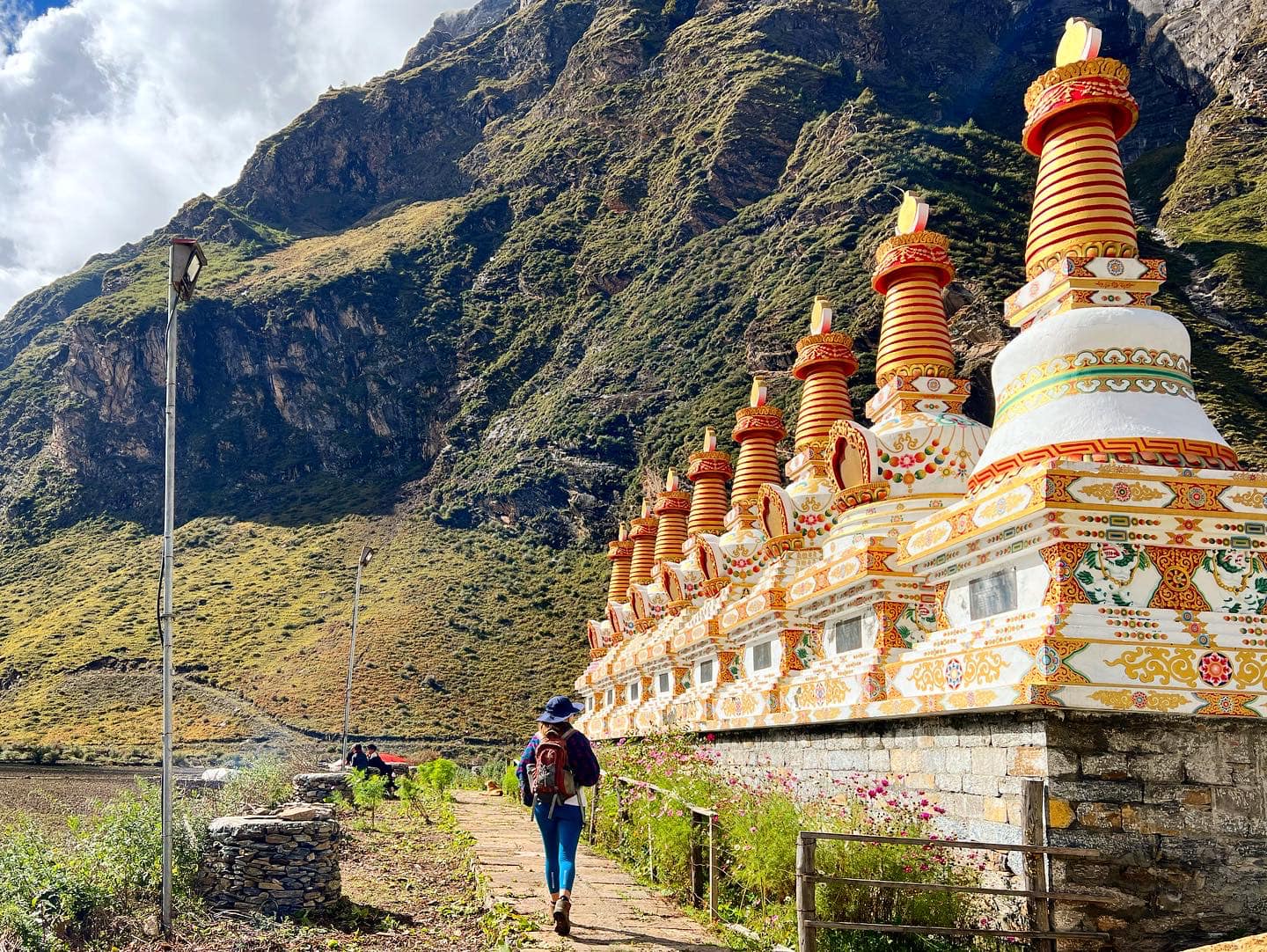


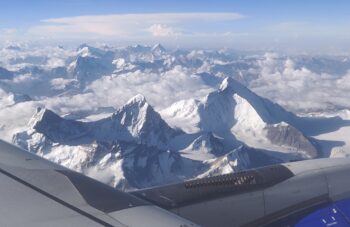
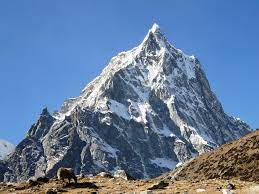
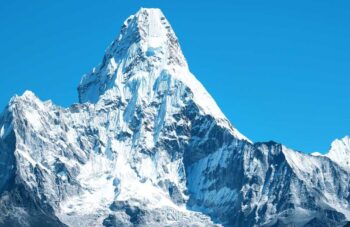
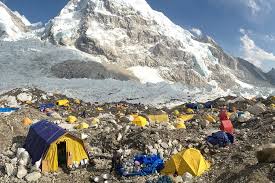
Leave a Reply